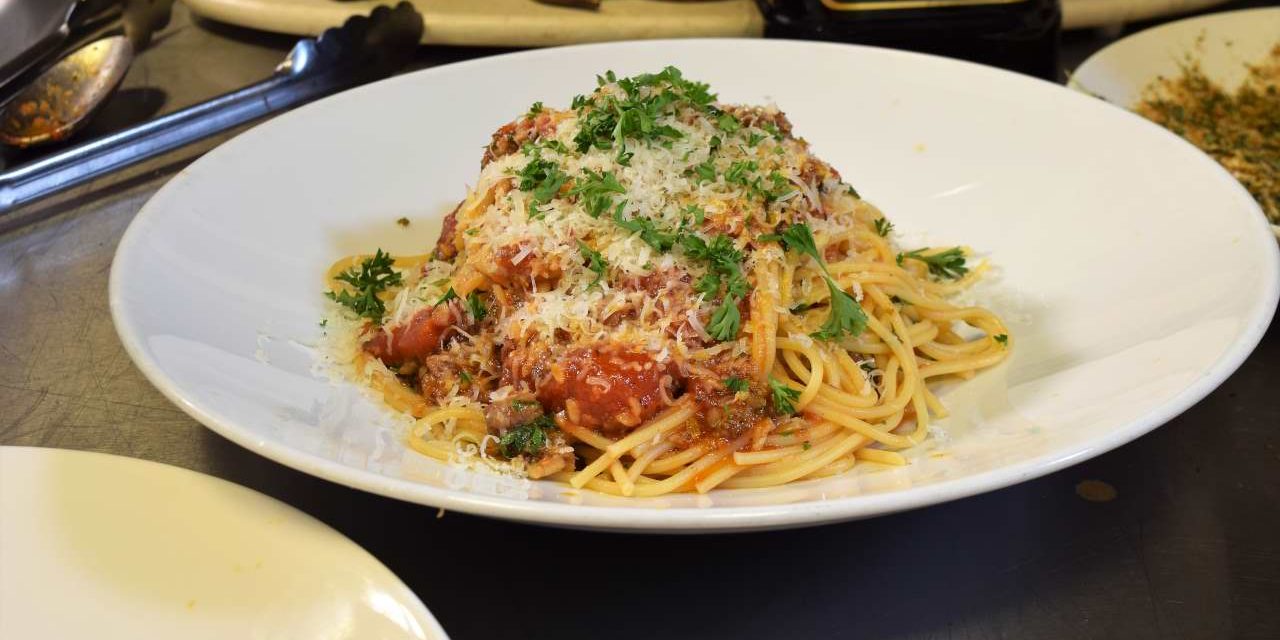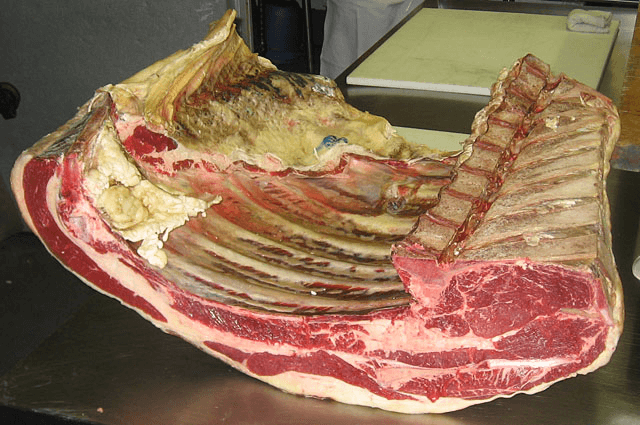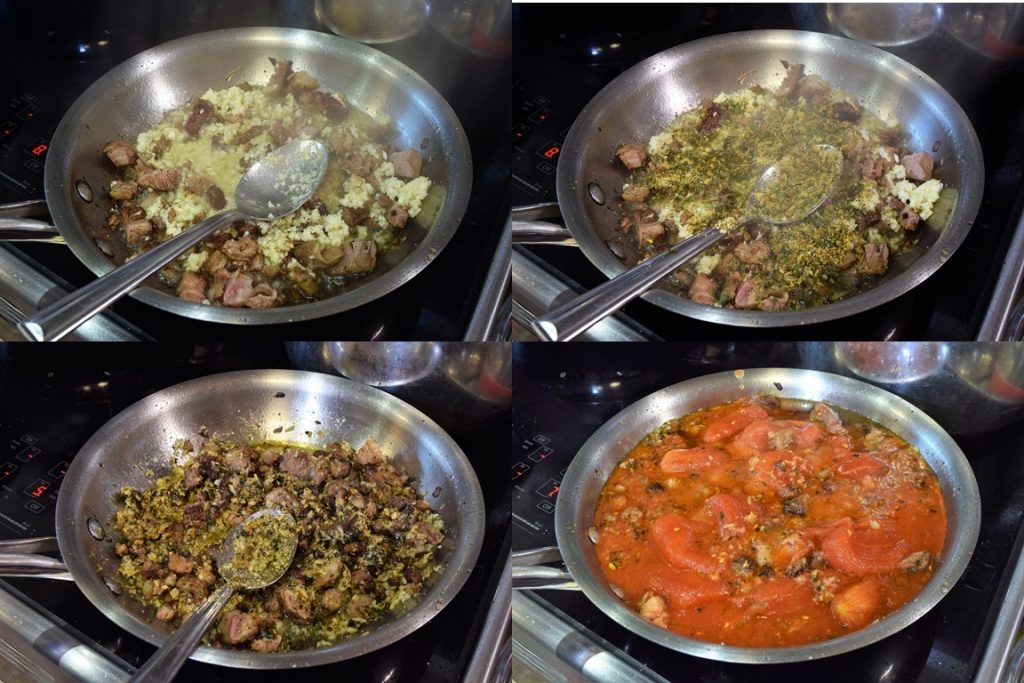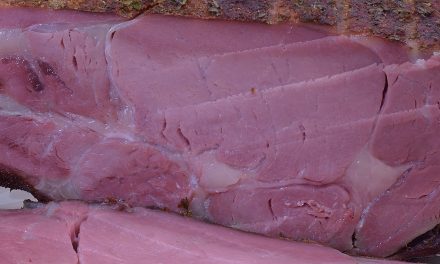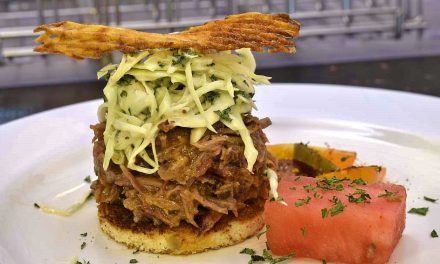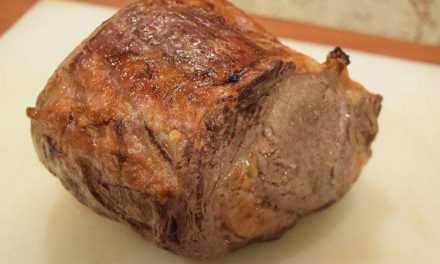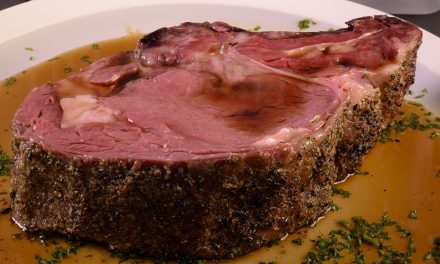Getting Stopped Short
Beef short ribs have become very popular. It’s easy to forget that not so long ago, they were really a sort of throwaway cut. Fatty, extremely high in collagen, and tough with lots of bone, butchers and chefs were only too happy to part with them in favor of the cut at the other end of that rib cage, the Prime Rib.
Short ribs found their way into ground beef, country style boiled dinners, and the occasional barbecue, to which they were poorly suited. Short ribs are even harder and longer to make tender than the prototype tough cut, beef brisket.
As the profit model changed, marketers have focused their efforts on creating a heightened sense of value to cuts that were once considered almost undesirable. Chuck, shanks, bottom round, and numerous other cuts that came to be labeled “London Broil” lessened the burden of increasing labor cost, food cost, and even overhead itself, as property prices skyrocketed.
Ragu wasn’t always a brand name.
I could wax for page after page about ragu, its French counterpart, ragout, their similarities, and their differences. Down the rabbit hole we would go, only to exit with sweaty brows but little consensus. Authenticists and purists would weigh in earnestly in vain attempts to clarify, and pounding tiny fists on virtual tables like overly tired infants who Mom never should have brought to the grocery store.
Let’s just say ragu/ragout must be tender, and let the controversy remain as to the actual size of the pieces in the ragu itself. Today, they will be larger than ground beef, but smaller than bite size.
First things first.
Short ribs come in various configurations, you even see boneless beef short ribs. How can a rib be boneless? Well, never mind that. Generic names for primal cuts of meat have always seemed designed more to confuse than inform. I bought the short ribs whole, and then cut them into single bone portions. Each portion is really enough for two people, but good luck cutting that bone in half without a band saw, even after it’s cooked.
In the slide below, we show the ribs after they were cut, four bones per side. I bagged them in Ziploc Freezer Gallon Bags, and stood them up in the Lipavi rack, so it didn’t matter if they were sealed or not–the lip stands above the water line.
Processed @
140F/60Cx72 hours.
That’s right, three days. This is the formula that Daniel Boulud used to make short ribs famous, he is a truly great chef. Even having worked for him entitles one to a certain amount of cachet and celebrity.
After processing, I siphoned the water out of the vessel, and replaced it with a bag of ice and water to top off. After chilling to 70F/21C, I removed the ribs, rack and all, drained by the sink, and then staged right into the fridge. Pretty handy. It’s no secret I love Lipavi stuff. It makes perfection easier.
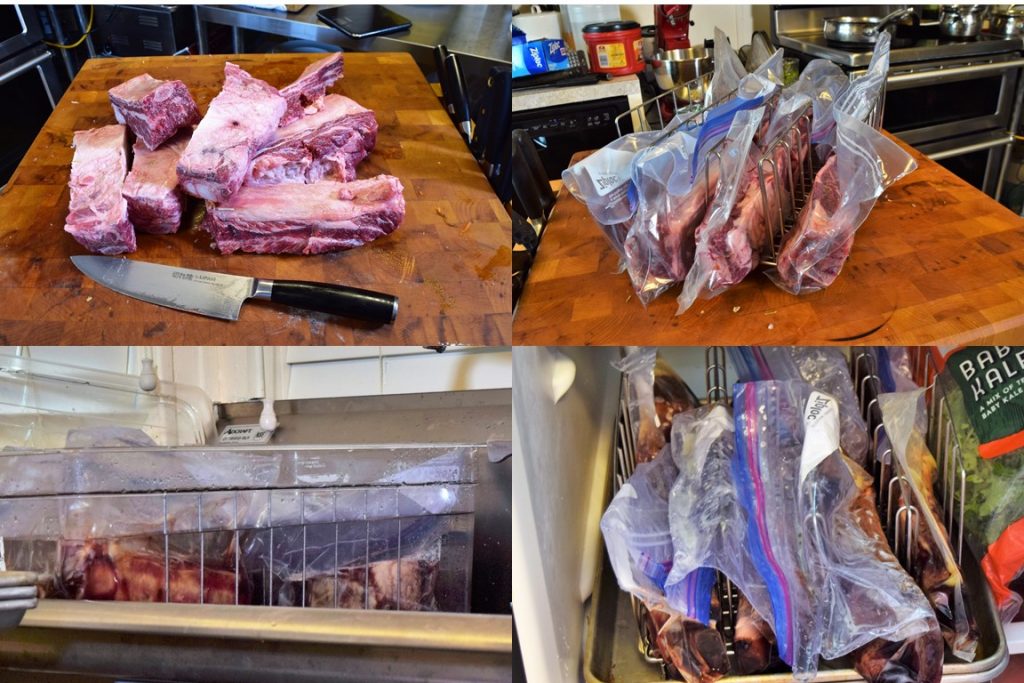
Day of service.
Remove the short rib from the bag, and save the juices. We will clarify them and put them in the sauce, using THIS METHOD.
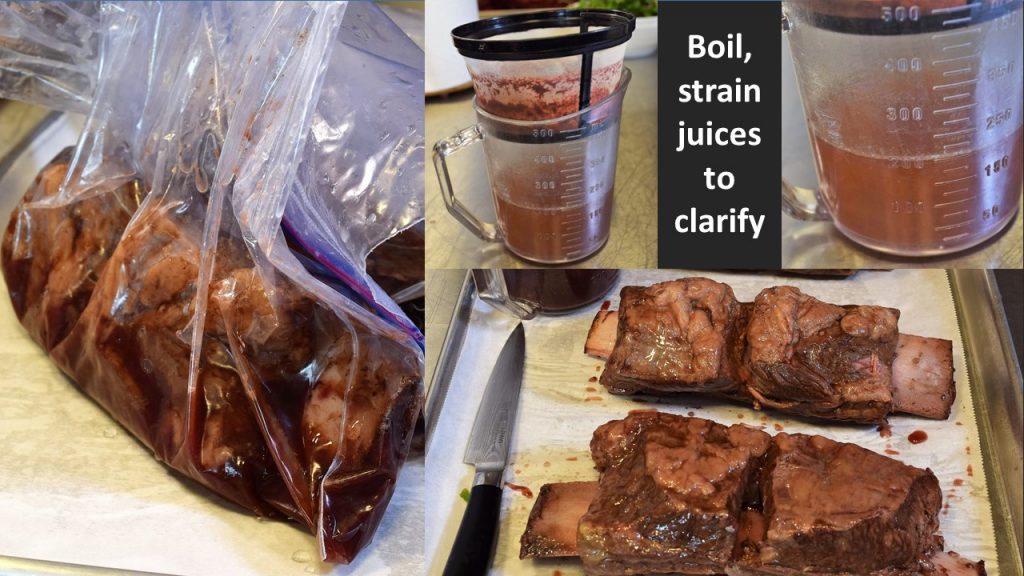
Chop this:
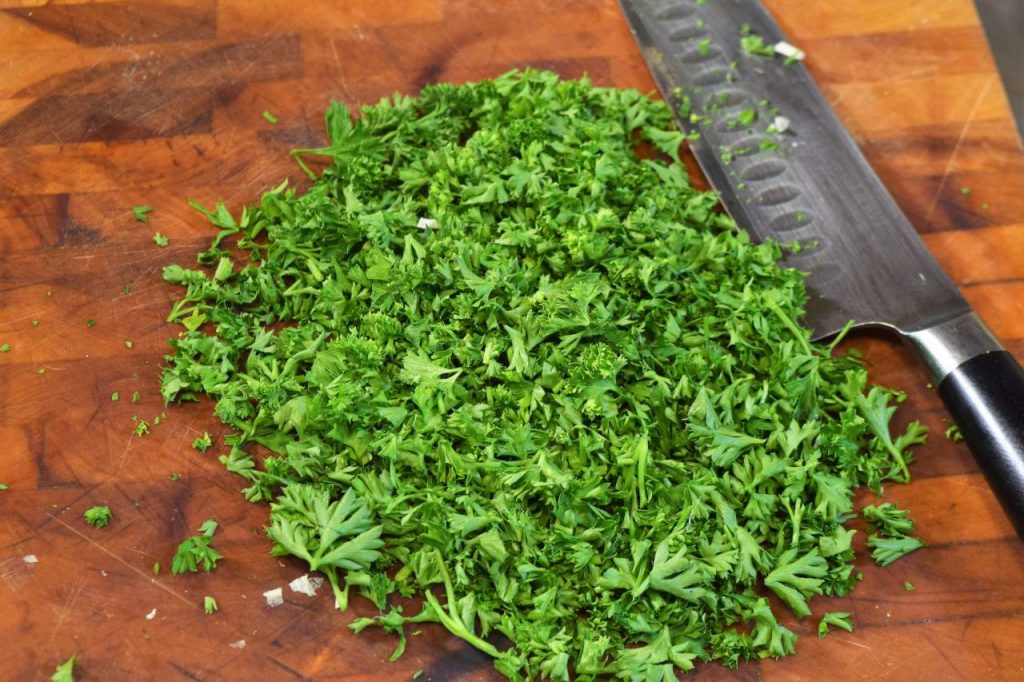
Don’t boil anything yet.
Remove the meat from the bone, it comes right off, and chop it coarsely. I peeled two heads of garlic and chopped them up.
Saute the meat on medium heat, I seasoned with THIS STUFF, which I call Rub#1. After the fat rendered, I added the garlic. Garlic.
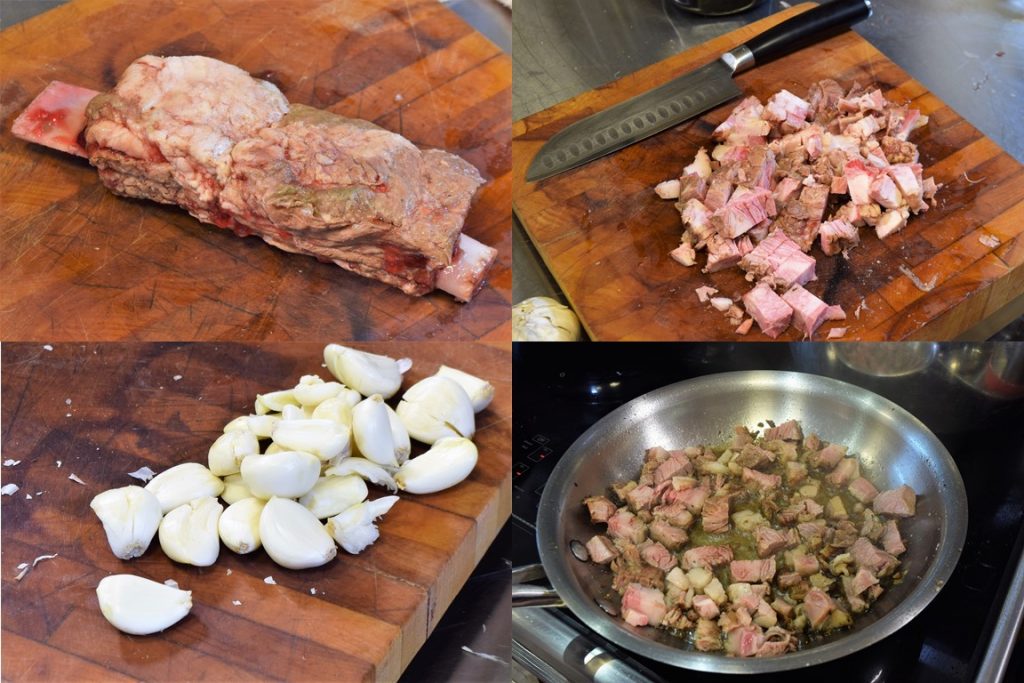
Continue to saute, but don’t let the garlic get brown. Even the authenticists agree with me on this one. Since there’s a little flour in the rub, you will get the result shown in the slide below, bottom left.
At that point I add a can of San Marzanos or comparable, even though there is no substitute for San Marzanos. They are a different strain of very pasty tomato, grown in volcanic soil (that’s the richest kind). They are crazy expensive, but, I gotta say, they are really good.
Add the clarified juices.
Simmer, as a purist would insist, and the flavor will develop, as all authenticists would agree.
Spaghetti, I boil.
Meanwhile, cook spaghetti, follow the instructions on the box. At least 4 ounces/120g dry per person. I don’t know how they formulate pasta cooking time, but they are pretty much always right on. The portion size, on the other hand, those people must be four feet tall.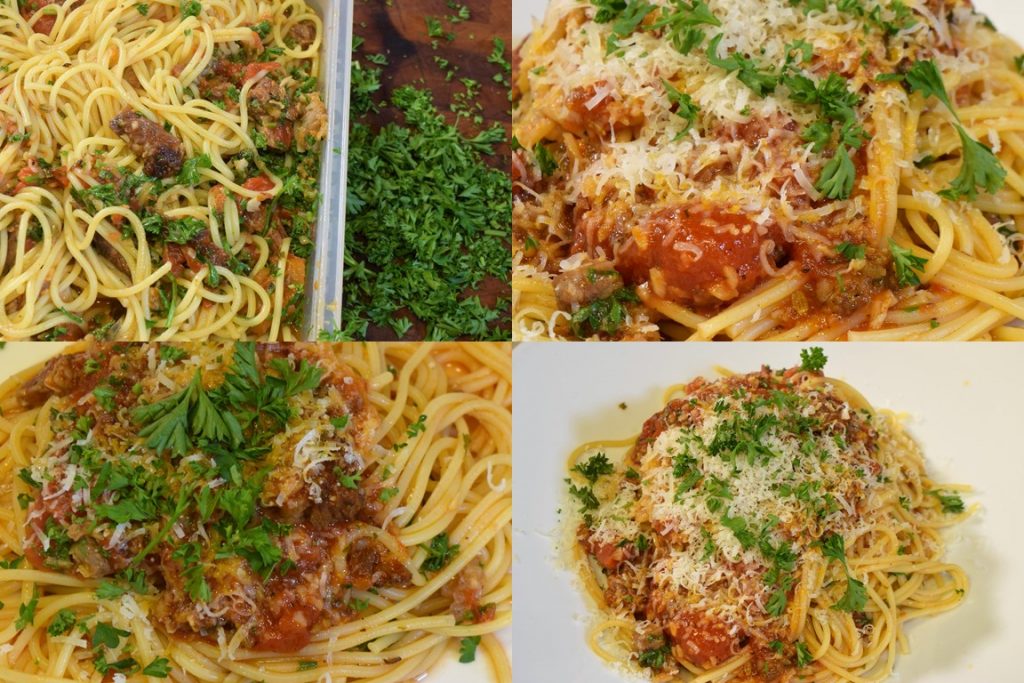
When the pasta is done, drain WELL. Let it sit in the strainer almost long enough to stick to itself. This matters, because we didn’t add any paste to the sauce. Even though San Marzanos are pasty, they are not THAT pasty.
Toss the pasta with SOME of the sauce, and add the parsley and a little grated Romano or whatever. I like Pecorino Romano. I never met a Reggiano I didn’t like, but, man, they charge an arm and a leg for that these days.
Plate the spaghetti, and sprinkle with some more of the cheese, and, then, the parsley. This is like one of my favorite things ever.
Note from the vault:
People frequently complain that their sauce runs off the pasta. They ask me how to prevent it. Well, the sauce does tend to do that, because basically it is an un-thickened water based liquid. But have you ever noticed that if you just put some butter on the well drained pasta, very little of it ends up on the plate? Well, the more fat you have in your ragu, the better it will stick to the pasta. You heard it hear first. Save some sauce to put on top anyway, I’m not a miracle worker.
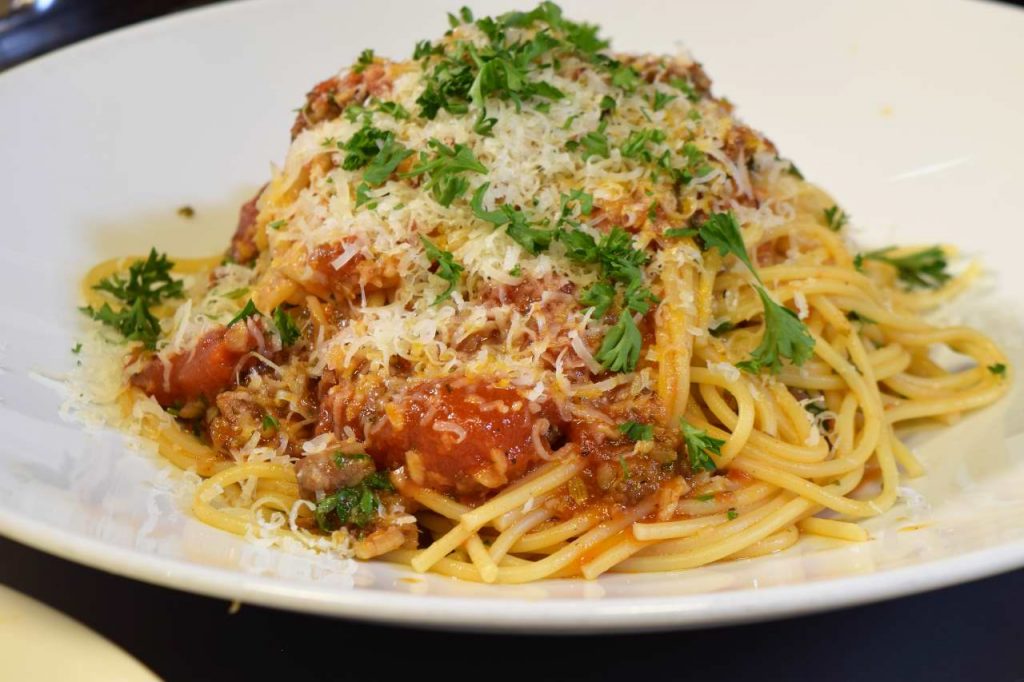
Bada Bing, Bada Bang.
Bada Boom.

